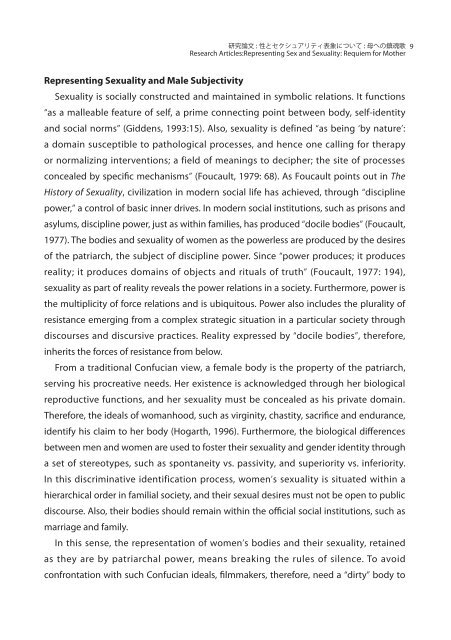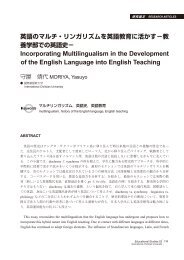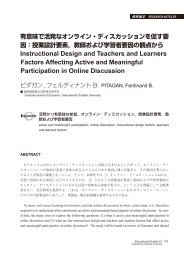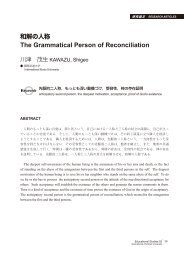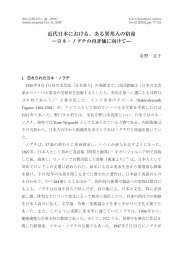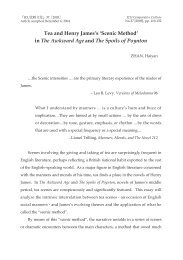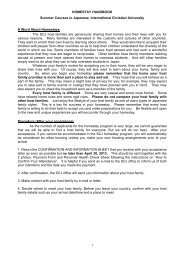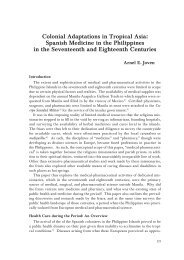Untitled - subsite - å½éåºç£æ大å¦
Untitled - subsite - å½éåºç£æ大å¦
Untitled - subsite - å½éåºç£æ大å¦
You also want an ePaper? Increase the reach of your titles
YUMPU automatically turns print PDFs into web optimized ePapers that Google loves.
: : 9<br />
Research Articles:Representing Sex and Sexuality: Requiem for Mother<br />
Representing Sexuality and Male Subjectivity<br />
Sexuality is socially constructed and maintained in symbolic relations. It functions<br />
as a malleable feature of self, a prime connecting point between body, self-identity<br />
and social norms (Giddens, 1993:15). Also, sexuality is defined as being by nature:<br />
a domain susceptible to pathological processes, and hence one calling for therapy<br />
or normalizing interventions; a field of meanings to decipher; the site of processes<br />
concealed by specific mechanisms (Foucault, 1979: 68). As Foucault points out in The<br />
History of Sexuality, civilization in modern social life has achieved, through discipline<br />
power, a control of basic inner drives. In modern social institutions, such as prisons and<br />
asylums, discipline power, just as within families, has produced docile bodies (Foucault,<br />
1977). The bodies and sexuality of women as the powerless are produced by the desires<br />
of the patriarch, the subject of discipline power. Since power produces; it produces<br />
reality; it produces domains of objects and rituals of truth (Foucault, 1977: 194),<br />
sexuality as part of reality reveals the power relations in a society. Furthermore, power is<br />
the multiplicity of force relations and is ubiquitous. Power also includes the plurality of<br />
resistance emerging from a complex strategic situation in a particular society through<br />
discourses and discursive practices. Reality expressed by docile bodies, therefore,<br />
inherits the forces of resistance from below.<br />
From a traditional Confucian view, a female body is the property of the patriarch,<br />
serving his procreative needs. Her existence is acknowledged through her biological<br />
reproductive functions, and her sexuality must be concealed as his private domain.<br />
Therefore, the ideals of womanhood, such as virginity, chastity, sacrifice and endurance,<br />
identify his claim to her body (Hogarth, 1996). Furthermore, the biological differences<br />
between men and women are used to foster their sexuality and gender identity through<br />
a set of stereotypes, such as spontaneity vs. passivity, and superiority vs. inferiority.<br />
In this discriminative identification process, womens sexuality is situated within a<br />
hierarchical order in familial society, and their sexual desires must not be open to public<br />
discourse. Also, their bodies should remain within the official social institutions, such as<br />
marriage and family.<br />
In this sense, the representation of womens bodies and their sexuality, retained<br />
as they are by patriarchal power, means breaking the rules of silence. To avoid<br />
confrontation with such Confucian ideals, filmmakers, therefore, need a dirty body to


